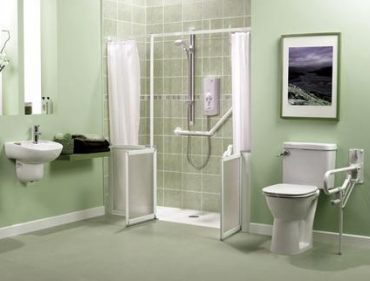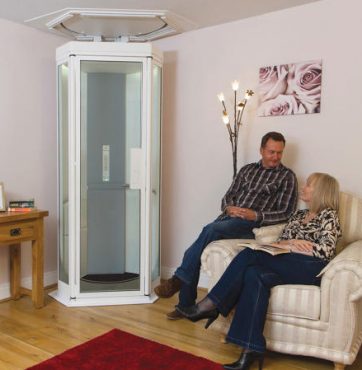
John Bleasby
Golden Years fast becoming a Golden Opportunity for contractors
Canadian ContractorAging boomer market suggests continued growth for Canadian renovators
Here are some statistics that will give every contractor pause to think.
- Canadians over the age of 65 will jump from 15.3% today to over 22% by 2030 (Statistics Canada)
- 83% of Canadians want to ‘age in place’ by remaining in their homes (Royal Bank)
- 92% of Canadians over 65 years (as of 2011) live in private homes. (Statistics Canada)
- 64% of seniors over 75 years have mobility problems (Statistics Canada)

It’s comforting for seniors to continue living in familiar surroundings together, rather than being squeezed into elder care facilities, and possibly separated.
What does this mean for you, the Canadian contractor? It’s a golden opportunity to grow your business by focussing on the seniors’ renovation market.
Barrie contractor is growing fast!
You don’t have to tell Richard Speare; he already knows and has adapted his business to meet this growing demand. The Barrie, Ontario contractor estimates billings of his family-owned business (Speare Construction & Contracting) have increased 65% over the past two years, due almost entirely to an increased focus on renovations and modifications to suit seniors’ lifestyles.
“The demographic is huge.”
Although he’s worked with seniors and special needs clients for about 20 years, Speare’s business has now developed to the point that it is sought out by funding agencies and occupational therapists who can assess specific needs of seniors. “The demographic is huge,” says Speare. “It’s a niche requiring a certain level of expertise to resolve lifestyle requirements in existing spaces. But we’ve done it so much, we’ve come up with so many unusual solutions. It’s become the majority of our work.”

Roll-in shower units and grab bars and high-seat toilets are common modifications in seniors’ bathooms
Remaining at home is the preferred option for seniors for a number of reasons. It’s not merely the expense of senior homes and care facilities, which can be substantial. The stress of downsizing from even a modest single family home to a 500 square foot bachelor or 1-bedroom apartment is considerable. Then there are the heart-breaking stories of couples sent to separate senior residences after decades of marriage because of differing health care needs.
Renovating is still a major decision
Nevertheless, while most seniors want to stay in their homes, many are hesitant. “Many older people worry that they have more house than they really need,” says Speare. “They also worry that modifications they make now might impact the resale value later. We emphasize to them that everything can be changed back again.”
Richard Speare’s top 3 renovations for seniors
“Number one and number two together would be access to the house like ramps or porch lifts, and bathrooms,” says Speare. “Third would be replacing carpets with non-slip floors. Someone with a wheelchair, or who is unsteady on their feet, finds carpets hard to walk on. We’re using a lot of vinyl plank flooring.” Typical project costs are $10,000 to upwards of $30,000, depending both on needs and available finances. Agency-funded jobs fall within the $15,000 range, which Speare admits is tough when tackling more than one issue.

It may look like a Star Trek pod, but in-home elevators don’t need much space, and allow seniors to enjoy life on all floors of an existing home
Back together again
If living independently isn’t ideal either for physical or emotional reasons, parents and their children may opt to live under the same roof, with modifications that give the privacy and living features each family unit requires. “We’re doing a fair number of in-home elevators so, for example, mom and dad can live with their children maybe on the third floor, but still get to the main floor or basement to watch TV together as a family,” says Speare.
Take Paul for example, a metro policeman who moved 90 miles north of the city with his wife after retiring. That left Paul’s elderly parents feeling isolated back in the city. So Paul had an addition built at the side of his new house and moved his parents in. Now his parents have the comfort of family close by, plus the assurance that health issues will be dealt with care and immediacy.
It can work the other way around too. Speare points out that with home prices and new mortgage rules affecting the affordability of first homes, young families are moving back with older parents, with a win-win result. “The bottom line for seniors is, if they can stay with family or in their own house, it’s better for them.”
In fact, the seniors’ renovation market is like any other renovation market, just with a tweak of marketing focus. And as the numbers tell us, the demand is destined to steadily increase over the next decades.
follow John on Twitter @john_bleasby


Leave a Reply